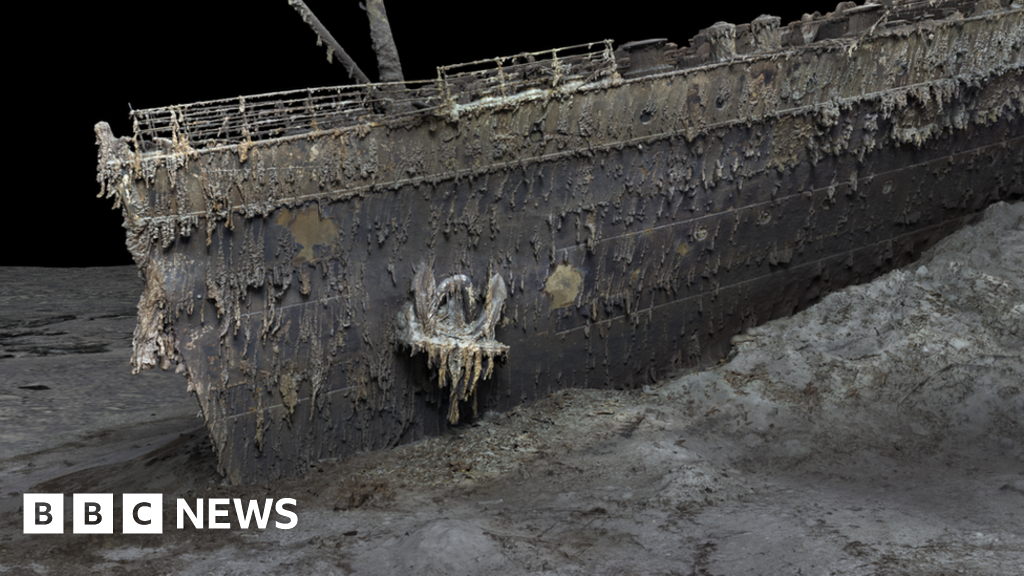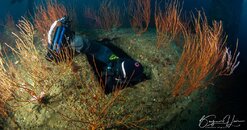Don't waste your time on schooners. The steamers and freighters are more interesting.That is very tempting. The Merrick was on my list the last time I was there but conditions weren't right to dive it.
I will send you a DM regarding scheduling. I'd love to get back up there and dive them.
- brett
You are using an out of date browser. It may not display this or other websites correctly.
You should upgrade or use an alternative browser.
You should upgrade or use an alternative browser.
HMHS Britannic (Kea Island, Greece -- 385 fsw)
- Thread starter beldridg
- Start date
Please register or login
Welcome to ScubaBoard, the world's largest scuba diving community. Registration is not required to read the forums, but we encourage you to join. Joining has its benefits and enables you to participate in the discussions.
Benefits of registering include
- Ability to post and comment on topics and discussions.
- A Free photo gallery to share your dive photos with the world.
- You can make this box go away
Don't waste your time on schooners. The steamers and freighters are more interesting.
My reason for the schooner was to build a photogrammetry model which would be hugely challenging at that depth.
- brett
What's the largest wreck that has been modeled in your experience?My reason for the schooner was to build a photogrammetry model which would be hugely challenging at that depth.
- brett
What's the largest wreck that has been modeled in your experience?
Well, if you really want to go big, the Titanic -- but that was not by divers but still an unbelievable achievement.

Titanic: First ever full-sized scans reveal wreck as never seen before
Full-sized digital scans reveal shipwreck in stunning detail, showing unopened champagne bottles.
In terms of divers, probably the Thistlegorm:
But that was, as I understand it, a team of divers that worked on it.
I've spent some time building a model of the Yukon here in San Diego which is about 110m long and resting on her starboard side. I would be done; however, the kelp on the port side has been a constant thorn in my side. I'm still trying to find some time to go back and resolve the seaweed issue and then finish it:

The Butterfly Effect : HMCS Yukon Model – Dive 5
Intro The “Butterfly Effect” is part of chaos theory in physics. The theory is that a small change in one state can result in large differences in a later state. The prototypical exampl…

Seaweed Snafu : HMCS Yukon Model – Dive 6
Intro / Background This will be a relatively quick post since I did the dive on Dec 2nd and have since done Dive #7 but I wanted to provide a chronological update on my “battle” to buil…

Cave Line & Cookies : HMCS Yukon Model – Dive 7
I have almost the entire photogrammetry model of the Yukon complete — in fact, I had it almost complete after dive 5. However, I’m still facing the ongoing problem with the moving seawe…

Seaweed Shenanigans : HMCS Yukon Model – Dive 8
Intro The adventure continues! Here is a snapshot of the project status after Dive #7 and before this dive. Obviously, still missing a few areas on the starboard amidships to hull area. After the r…
- brett
We are looking to do a model of a 436ft freighter(s) at 195, 230, and 270. When we asked one group they said over 30 dives to complete the model.Well, if you really want to go big, the Titanic -- but that was not by divers but still an unbelievable achievement.

Titanic: First ever full-sized scans reveal wreck as never seen before
Full-sized digital scans reveal shipwreck in stunning detail, showing unopened champagne bottles.www.bbc.com
In terms of divers, probably the Thistlegorm:
But that was, as I understand it, a team of divers that worked on it.
I've spent some time building a model of the Yukon here in San Diego which is about 110m long and resting on her starboard side. I would be done; however, the kelp on the port side has been a constant thorn in my side. I'm still trying to find some time to go back and resolve the seaweed issue and then finish it:

The Butterfly Effect : HMCS Yukon Model – Dive 5
Intro The “Butterfly Effect” is part of chaos theory in physics. The theory is that a small change in one state can result in large differences in a later state. The prototypical exampl…wreckedinmyrevo.com

Seaweed Snafu : HMCS Yukon Model – Dive 6
Intro / Background This will be a relatively quick post since I did the dive on Dec 2nd and have since done Dive #7 but I wanted to provide a chronological update on my “battle” to buil…wreckedinmyrevo.com

Cave Line & Cookies : HMCS Yukon Model – Dive 7
I have almost the entire photogrammetry model of the Yukon complete — in fact, I had it almost complete after dive 5. However, I’m still facing the ongoing problem with the moving seawe…wreckedinmyrevo.com

Seaweed Shenanigans : HMCS Yukon Model – Dive 8
Intro The adventure continues! Here is a snapshot of the project status after Dive #7 and before this dive. Obviously, still missing a few areas on the starboard amidships to hull area. After the r…wreckedinmyrevo.com
- brett
- Messages
- 8,632
- Reaction score
- 7,342
- # of dives
- 2500 - 4999
You're some diver beldridg
We are looking to do a model of a 436ft freighter(s) at 195, 230, and 270. When we asked one group they said over 30 dives to complete the model.
Quite honestly, a lot depends upon the level of detail you want/need, the level of accurate color representation, and the visibility of the water.
For example, Marcus & Pete are working on the Truk Wreck Baseline Project and are using cameras mounted on scooters. They get wrecks done in a very, very fast amount of time. They have done some really big wrecks in just 1 or 2 dives.
I've spent two dives on a single airplane because I want to get a huge level of detail and the visibility is usually 3-5m.
The Thistlegorm project I referenced too 12 dives with about 14 hours in water (not sure how much of that was deco or if there were multiple divers) but they also did most of the interior.
I know some guys in Australia who are working as a team and they all have GoPro cameras. They did the 300' long USS Apogon sub in Bikini in a single dive. I did the same exact class of sub in a much higher level of detail here in California (USS Moray) in 4 dives.
As with most things, "it depends" is the case here.
- brett
What a Dive!!! Certainly a grade A bucket list vessel.
As to the pursuit of other "interesting" deep wrecks, how about UC-97, the German WWI U-Boat at the bottom of Lake Michigan?
As to the pursuit of other "interesting" deep wrecks, how about UC-97, the German WWI U-Boat at the bottom of Lake Michigan?
What a Dive!!! Certainly a grade A bucket list vessel.
As to the pursuit of other "interesting" deep wrecks, how about UC-97, the German WWI U-Boat at the bottom of Lake Michigan?
I haven't kept up on it. Has it been proven that it was located? Are the coordinates and depth published?
Another WW1 German sub that we received as part of the Armistice, the UB-88, is here off the coast of California and I've done quite a few dives on her and built a full photogrammetry model. She is about 190' deep to the sand. She sank on Jan 3, 1921 during target practice.
- brett
- Messages
- 488
- Reaction score
- 689
- # of dives
- I'm a Fish!
Similar threads
- Replies
- 9
- Views
- 1,491
- Replies
- 9
- Views
- 3,136
- Replies
- 3
- Views
- 729
- Replies
- 29
- Views
- 2,522
- Replies
- 3
- Views
- 731




